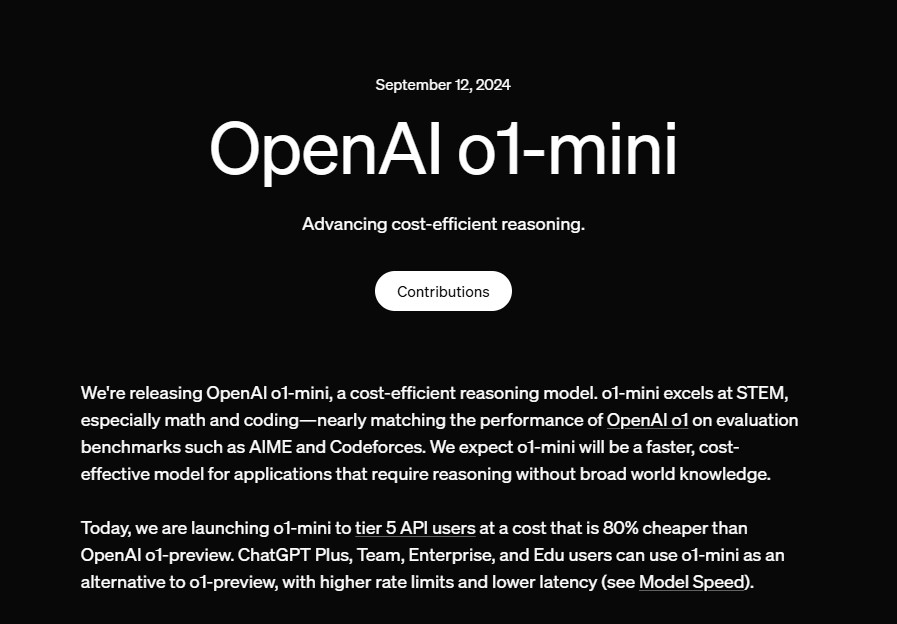The journey toward artificial general intelligence (AGI) has captivated researchers, tech enthusiasts, and society at large. AGI represents a form of AI capable of general reasoning across diverse tasks—something beyond today’s specialized AI systems. OpenAI’s latest release, the O1 model, is fueling discussion about whether this model could be the next leap toward AGI. Here’s a look at what makes the O1 model unique, its current limitations, and how it could reshape our understanding of AI’s future.

Defining AGI and Why It Matters
AGI differs fundamentally from existing AI by aiming to perform across a range of tasks rather than focusing on a single domain. In contrast to task-specific AI, AGI aspires to generalize its understanding, applying insights from one area to others. If achieved, AGI could have widespread impacts, revolutionizing fields from healthcare to engineering, and even creative arts. However, AGI also introduces complex ethical questions, especially regarding its autonomy and the societal changes it could drive.
What Sets the O1 Model Apart?
The O1 model introduces a novel approach in its “test-time computation,” allowing it to address complex queries by breaking down problems into manageable steps. This ability to process a problem piece by piece is often likened to human-style reasoning. For example, when tackling a math problem, O1 can logically analyze each part, enabling more reliable answers than previous models.

OpenAI has tailored two distinct versions of O1 to suit various tasks: the “O1 Preview” for deep reasoning and in-depth analysis, and the “O1 Mini,” optimized for quick responses, ideal for real-time interactions. This division enhances O1’s flexibility, addressing both complex and fast-paced needs. While still a narrow AI, O1’s architecture provides a promising step toward AGI’s adaptability and efficiency.
Chain-of-Thought Reasoning and Its Implications
A key feature distinguishing O1 is its Chain-of-Thought reasoning, a process that allows the model to dissect problems into sequential steps. In code-solving challenges on competitive platforms, O1 has ranked among top performers, demonstrating impressive logical abilities. But AGI would require even more—such as creativity, emotional intelligence, and nuanced decision-making, capabilities that the current O1 model cannot fully replicate.
The Current Challenges Limiting AGI Development
While O1 excels in logic-driven areas, it struggles in tasks that need creativity or emotional insight, both essential for AGI. For instance, creative tasks that rely on empathy or spontaneous imagination reveal the limitations of O1’s capabilities. Furthermore, O1 Preview’s processing time can be a disadvantage for scenarios requiring instant answers, like customer service chats. Bridging the gap between deep reasoning and speed will be a significant hurdle as we inch closer to AGI.
How O1 is Already Impacting Real-World Applications
The O1 model’s structured reasoning capabilities make it a powerful tool for fields like scientific research and data analysis. Researchers, for instance, can use O1’s advanced computational analysis to sift through complex datasets, accelerating discoveries in areas such as drug research and environmental science. However, creative industries still face challenges in leveraging O1 effectively, as the model lacks the adaptability required to excel in human-like imaginative tasks.
Ethics and Safety on the Road to AGI
The pursuit of AGI raises profound ethical considerations, especially concerning autonomy and the potential for AI systems to make independent decisions. With O1, OpenAI has implemented safety protocols, but the transition to AGI will require rigorous new safeguards to maintain responsible control and prevent misuse. Bias, a persistent issue in AI, also becomes more critical as these models become more influential in areas such as hiring or healthcare. Ensuring fairness in AI-driven decisions will be crucial for establishing trust in AGI.
Looking Ahead: How Close Are We to AGI?
While O1’s release signifies progress, experts agree that true AGI is likely still years or even decades away. Achieving AGI will require advances in emotional intelligence, general knowledge transfer, and flexible problem-solving that today’s AI architectures can’t yet provide. Future innovations will likely involve new types of neural networks or even entirely different frameworks to overcome these limitations.
The O1 model represents a step forward, showcasing the rapid evolution of AI and hinting at AGI’s potential. Its abilities mark a milestone on the road to AGI, underscoring both the incredible possibilities and the careful considerations needed as AI advances.






Leave a Reply